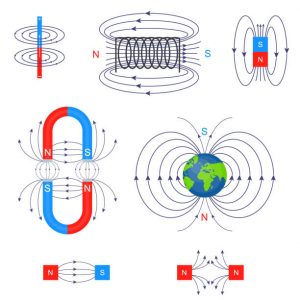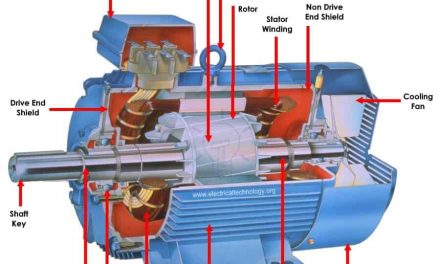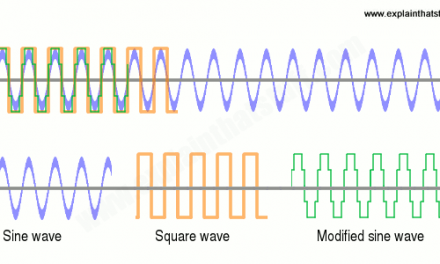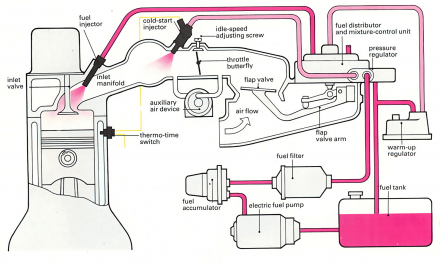Electromagnetism is a branch of Physics, that deals with the electromagnetic force that occurs between electrically charged particles. The electromagnetic force is one of the four fundamental forces and exhibits electromagnetic fields such as magnetic fields, electric fields, and light. It is the basic reason electrons are bound to the nucleus and are responsible for the complete structure of the nucleus. In this article, you will learn about the Electromagnetic force with Pritish Kumar.
What is Electromagnetic Force?
The electromagnetic force is a type of physical interaction that occurs between electrically charged particles.

Electromagnetic Force
It acts between charged particles and is the combination of all magnetic and electrical forces. The electromagnetic force can be attractive or repulsive.
Before the invention of electromagnetism, people or scientists used to think electricity and magnetism are two different topics. The view has changed after James Clerk Maxwell published A Treatise on Electricity and Magnetism in the year 1873. The publication states that the interaction of positive and negative charges are mediated by one force. This observation laid a foundation for Electromagnetism. Later many scientists like Michael Faraday, Oliver Heaviside, and Heinrich Hertz contributed their ideas in electromagnetism.
What is Electromagnetism?
Electromagnetism is a process where a magnetic field is created by introducing the current in the conductor. When a conductor is electrically charged it generates magnetic lines. For example, if current i.e., positive charges move in a wire, it produces the magnetic field along the wire, and the direction of magnetic lines and force can be determined using Right-hand Rule. Refer to the image for a detailed explanation.
Explanation of Electromagnetism with an Example
Permanent Magnetic speakers commonly used in TV’s and Radios are perfect examples of Electromagnetic devices. Let’s see the operation of these devices which are based on the principle of electromagnetism.

Permanent Magnetic speakers
In order to convert electrical waves into audible sound, the speakers are designed. A metal coil is attached to a permanent magnet and when current passes through the coil it generates a magnetic field. The newly formed magnetic field is repelled by the permanent magnetic field resulting in the vibrations. These vibrations are amplified by the cone-like structure causing the sound. This is how speakers work based on electromagnetism.
Electromagnetic Induction
We have seen what happens when a conductor is electrically charged. Now, let’s see what happens if we place a conductor in between the magnetic field.
When a conductor is placed or moved through the magnetic field it generates voltage i.e., electricity. This principle is called Electromagnetic Induction. The voltages generated will be based on the speed of the conductor moving through the electric field. Faster the speed of the conductor, the greater the induced electricity or voltage.
Faraday’s Law
According to Faraday’s Law, the relative motion between the magnetic field and conductor, the flux linkage changes and this change in flux induces a voltage across the coil.

Explanation with an example
DC Generator works on the principle of Faraday’s Law of Electromagnetic Induction. It is a system that converts mechanical energy into electrical energy.

DC Generator
In the above figure, A rectangular conductor width sides are placed in between a magnetic field. When the rectangular conductor rotates in between magnetics, it cuts the magnetic field thereby causing the Electromagnetic field (e m f).
Properties of the Electromagnetic Wave
A few properties of electromagnetic waves are:
- Electromagnetic waves are propagated by oscillating electric and magnetic waves at right angles to each other.
- They exhibit the properties of interference and diffraction.
- They travel at a speed of 3 × 108m/s in a vacuum.
- Electromagnetic waves are transverse waves.
- The relationship between the wavelength (λ) and frequency (c) of an electromagnetic wave is given as follows:
c = v λ
Applications of Electromagnetism
A few applications of electromagnetism are:

Applications of Electromagnetism
- Electromagnetism serves as a fundamental working principle for many of the home appliances in household applications.
- The Maglev trains or high-speed trains work on the principle of electromagnetism.
- Electromagnetic radiations are used in the communication system to transfer data from the source to the receiver.
- In industries, starting from small instruments to large power equipment, electromagnetism is used at least at one stage of their work.
Fundamental electromagnetic elements
Electric charge

Electric charge
Electric charge is an innate property of all charged fundamental particles and can be either positive or negative.
The charged particles that are most common in the universe are negatively charged electrons and positively charged protons.
A charged object, such as a statically charged balloon, has an excess or lack of electrons.
When charged particles are moving, they are known as electric currents. An example of an electric current is the flow of electrons along an electrical wire.
Intrinsic magnetic moment
In contrast to electric charge, there is no evidence that magnetic charge exists. However, some fundamental particles do have an innate magnetic property known as the intrinsic magnetic dipole moment. A particle with a magnetic moment, such as an electron, can roughly be thought of as a very small bar magnet. A permanent magnet is a collection of particles with aligned magnetic moments.
Electromagnetic field
The electromagnetic field is a physical field created by charged particles and particles with a magnetic moment. The field itself does not carry electric charge or magnetic moment, but it does carry energy and momentum. The field can transfer its energy and momentum to charged particles and particles with magnetic moment.

Scientific Magnetic Field
This field can also occasionally create or destroy particles. The electromagnetic field contains two components: an electric field and a magnetic field. Both are inseparable components of one unified field.
The electromagnetic field can take on five general forms:
- Electrostatic fields consist of a static electric field and a negligible magnetic field. An example is the field surrounding a stationary, statically charged balloon.
- Magnetostatic fields consist of a static magnetic field and a negligible electric field. An example is the field surrounding a stationary magnet.
- Electroquasistatic fields consist of a slowly changing electric field and a slowly changing magnetic field, with the electric field dominating. An example is the field inside a simple electric circuit.
- Magnetoquasistatic fields consist of a slowly changing electric field and a slowly changing magnetic field, with the magnetic field dominating. An example is the field inside an electromechanical generator.
- Electromagnetic waves consist of rapidly changing electric and magnetic fields that travel as waves. Electromagnetic waves are emitted any time an electrically charged object or magnet accelerates. These waves are generally referred to as light. All frequencies of light consist of electromagnetic waves, from radio waves on the low-frequency (long wavelengths) end of the electromagnetic spectrum to gamma rays on the high-frequency (short wavelengths) end.
Factors affecting viscosity –
Pressure has an effect on both, the viscosity of liquid as well as gases.
- On increasing pressure viscosity of liquid molecules increases due to the increase in the resistance to the flow of liquid.
- On increasing pressure, the viscosity of gas molecules decreases due to the increase in glow of molecules. Under most conditions, viscosity is independent of pressure. Viscosity has a pressure dependence for gases when the ideal gas model breaks down (e.g. at low temperatures and/or high pressures) and for liquids at very high pressure.
- Under most circumstances, viscosity is sovereign of pressure. Viscosity has a pressure dependence for gases when the ideal gas model breaks down (e.g. at low temperatures and/or high pressures) and for liquids at very high pressure.
- Viscosity is usually independent of pressure, but liquids under extreme pressure often experience an increase in viscosity. Since liquids are usually incompressible, an augment in pressure doesn’t actually bring the molecules appreciably closer together.
- The viscosity of gases increases as temperature increases and is around comparative to the square root of temperature. This is due to the augment in the incidence of intermolecular collisions at higher temperatures.
There is no effect of pressure on the coefficient of viscosity of gases. For most circumstances near the conditions we live in, pressure doesn’t have much effect on viscosity.










